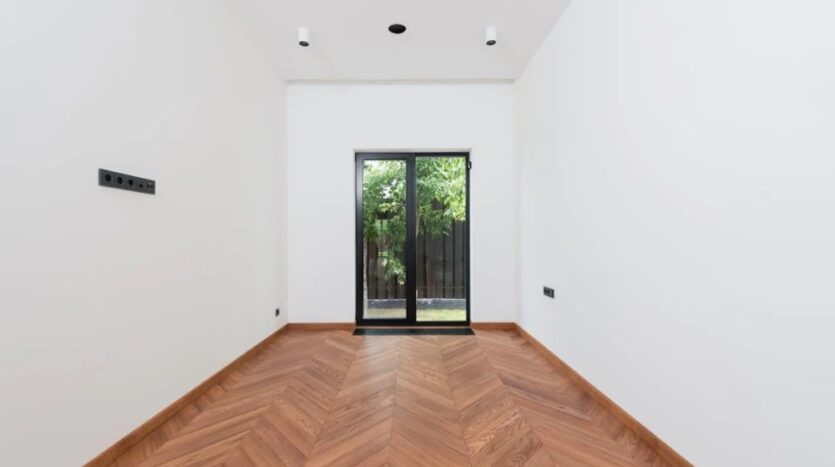Eco-Friendly Renovations: Adding Value to Your Home While Helping the Planet
Renovating your home is an exciting process that allows you to enhance its functionality, aesthetics, and value. In recent years, there has been a growing trend toward eco-friendly renovations, driven by increased environmental awareness and the desire to save on energy costs.
Incorporating sustainable practices into your remodelling project benefits the planet and boosts your home’s market appeal. Here, we explore how eco-friendly renovations can add value to your property while contributing to a healthier environment.
Why Choose Eco-Friendly Renovations?
Eco-friendly renovations offer numerous benefits that extend beyond reducing your carbon footprint. These sustainable upgrades can lower energy bills through features like energy-efficient windows and improved insulation, which help reduce heating and cooling costs. They also increase your home’s value, as properties with green features often sell faster and at higher prices due to their modern, energy-efficient appeal.
Additionally, eco-friendly materials promote healthier living by minimizing indoor air pollution and avoiding harmful chemicals in conventional products. Globally, many countries are adopting sustainability-focused policies, encouraging homeowners to embrace eco-friendly practices. The shift is clear from incentives in the United States and Europe to Australia’s growing emphasis on green building standards.
In Australia, builders in Illawarra are increasingly incorporating sustainable practices into their projects, offering expertise in energy-efficient designs and eco-conscious materials. Many governments and utility companies also provide tax credits, rebates, and other incentives to make sustainable renovations more accessible, motivating homeowners to join the movement toward greener living. The benefits of eco-friendly renovations go beyond reducing your carbon footprint. They can:
- Lower Energy Bills: Sustainable upgrades such as energy-efficient windows and insulation significantly reduce heating and cooling costs.
- Increase Home Value: Properties with green features often sell faster and at higher prices due to their modern, energy-efficient appeal.
- Promote Healthier Living: Eco-friendly materials minimise indoor air pollution by avoiding harmful chemicals in conventional products.
- Qualify for Incentives: Many governments and utility companies offer tax credits, rebates, or incentives for adopting sustainable practices.
Eco-Friendly Renovation Ideas
Embarking on eco-friendly renovations can feel overwhelming, but with the right ideas and inspiration, you can make impactful changes that benefit your home and the planet. Below are some practical and innovative suggestions to guide your journey.
Energy-Efficient Windows and Doors
One of the simplest ways to enhance your home’s energy performance is to replace outdated windows and doors with energy-efficient models. Look for products with a high Energy Star rating, which ensures better insulation and reduces the need for excessive heating and cooling.
Improved Insulation
Adding or upgrading insulation in your walls, attic, and floors helps maintain a consistent indoor temperature. Eco-friendly insulation options, such as recycled denim or cellulose, are sustainable alternatives to traditional fibreglass insulation.
Solar Panels
Installing solar panels is a transformative way to reduce reliance on fossil fuels. Although the upfront cost can be significant, the long-term energy savings and potential to sell excess energy back to the grid make it a worthwhile investment.
Water-Efficient Fixtures
To conserve water and reduce utility bills, replace old faucets, showerheads, and toilets with water-efficient models. Low-flow fixtures and dual-flush toilets are practical solutions that don’t compromise performance.
Sustainable Flooring
Opt for eco-friendly flooring materials such as bamboo, cork, or reclaimed wood. These options are durable, stylish, and sourced sustainably. They often have lower levels of volatile organic compounds (VOCs), contributing to better indoor air quality.
Smart Home Technology
Integrating smart technology into your home allows for efficient energy use. Smart thermostats, lighting systems, and appliances can be programmed to operate only when needed, reducing waste and lowering utility bills.
Eco-Friendly Paints and Finishes
Conventional paints can release harmful VOCs into your home, impacting air quality and health. Opt for non-toxic, low-VOC, or VOC-free paints to create a safer living environment.
Green Roofs and Gardens
A green roof—a layer of vegetation planted over a waterproof membrane—can improve insulation, reduce the urban heat island effect, and provide a habitat for local wildlife. Similarly, a backyard garden with native plants requires less water and maintenance.
Repurposed and Recycled Materials
Incorporating reclaimed wood, metal, or brick into your renovations reduces waste and adds unique character to your home. Salvaged materials can be used for countertops, shelving, or accent walls.
The Financial Aspect of Eco-Friendly Renovations
While eco-friendly renovations may require a higher initial investment, they often pay off in the long run through energy savings, increased property value, and lower maintenance costs. Additionally, financial incentives can make these upgrades more affordable:
- Tax Credits and Rebates: Check local and federal programs for incentives on solar panels, energy-efficient appliances, and insulation.
- Energy-Efficiency Mortgages: Some lenders offer loans specifically for energy-saving improvements.
- Utility Company Programs: Many utility companies provide rebates for upgrading energy-efficient systems.
Final Words
Eco-friendly renovations are more than a trend; they represent a shift toward a sustainable future. Whether planning a small upgrade or a major overhaul, incorporating green features into your renovation is a smart move that benefits your wallet and the planet. Eco-friendly renovations provide tangible financial benefits, enhance the value of your home, and contribute to a healthier, more sustainable world.








